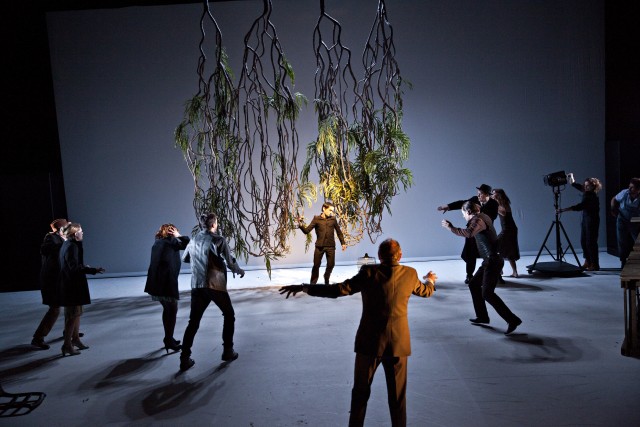Six Characters in Search of an Author really has to be viewed with an open, imaginative mind.
The impression I got from the play with this sense of confusion and tragedy, atop this desire to change the dynamics of stage production.The idea of six characters who present themselves independently yet still wish to be claimed by an author is really ironic and really creative. In the confusion between reality and fantasy, I felt like the characters themselves even had trouble agreeing on what really occurred or at least the reasons for why they occurred. It doesn’t seem like they’re in search for one author in particular; almost as if anyone will do. From that I got the feeling that there was a message that these characters simply just wanted to be seen and perform as they were, with no pretenses. The author in this play sort of represented all authors collectively. When the characters approach this director in the play, they insist on telling the story as it is while the director wants to change it and make it more light-hearted. I also felt like the “nude reveal” scene was sort of another way of just being direct and upfront about what occur, basically a way of ensuring that all that is true to them is laid out in front of everyone. I think they’re trying to make the author question the reality of the work normally produced. The author doesn’t really seem to question if their story is real, up until the end.
There was one scene in particular that I can’t remember now but what the characters said gave me the idea of an author writing this story and along the way becoming somewhat embarrassed or ashamed of it to ever produce it, and ending up throwing it away in the trash. Somehow, they’ve found a way to bring life to their story. Usually, the author is the one that shapes these characters, but in this play it felt much more like the characters had the upper-hand. The characters were able to draw in the actors and the directors and basically make nothing seem more important at that moment than the tragedy of their lives, that way the actors and director becomes tied into the tragedy.
What I was mostly left wondering was if the characters have appeared to several authors before, sort of like an apparition, to disrupt the flow of things. Who is to say they didn’t make up the story as they went along? Overall, I think it was a really interesting production.
Also, I read this review from the New York Times that I think can add to the discussion.


 Carnegie Hall is known for its prestigious nature in the classical music and performance world. I’ve never actually been there before, but as a pianist, I know that it is a place where all musicians strive to be and play one day.
Carnegie Hall is known for its prestigious nature in the classical music and performance world. I’ve never actually been there before, but as a pianist, I know that it is a place where all musicians strive to be and play one day. Professor Drabik asked us if we hated her.
Professor Drabik asked us if we hated her.
